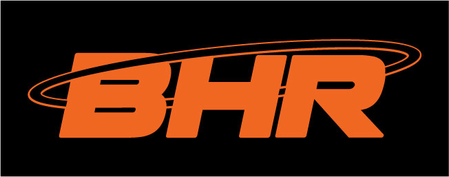BHR Long TubeHeader Back Story
This RX8Club thread
https://www.rx8club.com/series-i-aftermarket-performance-modifications-23/teamrx8%92s-renesis-header-theory-thread-266914/
(and several others of similar topic) are always of interest to me because, although there may be many different engine "simulator" programs, different personal theories/designs and such, the one consensus I did hear from the many different people whom I discussed header design with (as well as observing what others were reporting and building at the time, such as Eric Meyer, SpeedSource, and others) was that header design is never really based on much more than abstract theory as the myriad variables we encounter in the environmental realm as well as the human realm render objective and repeatable data somewhat moot.
With this as a basis of understanding, and an example of a long-tube header which satisfied it's owner in my hands at the time, I set about examining the long-tube concept's efficacy and fitment on the Renesis/RX-8. To be honest, I wanted the experiment to fail because then BHR would be able to respond to the public pressure at the time to finally develop something of long-tube design for the masses as I already knew it would be a fabricating nightmare, and I would be able to say that such designs are not worth the effort. As such, I would have been able to move on to more popular product design such as a BHR cat-back exhaust.
The problem was that I tweaked the design of the header I borrowed and found 8 more RWHP with two simple changes. To me, that was worth pursuing as the racer who sent me the header had positive results with his own prior use in the first place. The next step was to build a wholly new header implementing the tweaks and check the design (again) on a chassis dyno. We used a 2008 40th Anniversary RX-8 with only 24K miles on the original engine/chassis, with the only modification being the BHR Ignition System, and no tuning involved. The numbers we found after 10 pulls before and 10 pulls after can be found here; https://black-halo-racing.myshopify.com/…/black-halo-racing…
After I contemplated what we found, I then had to consider the idea that the long-tube concept would not provide any improvements versus a simple short-tube design with larger primaries and a 3" collected outlet flange. Herein lay several things that I have not shared in public.
Whether short-tube or long-tube, the engine flange, the primary tubes, and the exit collector were all going to be comprised of the same exact pieces. The welding/fabrication labor costs would not change, either.
All this left two major questions; 1) What is the price difference whether or not I added 18" to the primary tube length? 2) Would a short-tube design be superior to a long-tube design? The answers? 1) Little to none. 2) No.
Because I had planned to use a 3" outlet flange (versus the factory 2.5" outlet), I would have to offer a custom midpipe section with the header regardless of primary tube length, anyway, so I decided to simply make the BHR Header offering a long-tube design.
Some might say that, had I offered a short-tube header, I could then offer a catted midpipe and the BHR Header would be street-legal. For some large companies, that might be true. In this case, with BHR being a small, family-owned, business we could not afford the cost of demonstrating compliance with federal EPA or CARB regulations. The CARB compliance, alone, can run as high as $50K.
With all this considered, as well as tried-and-true header design throughout the decades as regards gasoline-burning engines, BHR decided to offer our header in a long-tube design and to tell our customers to keep the use of the product on the racetrack and in those classes which allow such modifications.
In addition, ever since then, people on all sorts of websites have opined as to whether or not such a design was beneficial, that BHR were simply deceiving people to make "a buck", or whatever other personal slights they could conjure up. Please trust me when I tell you that none of this was the case and it never has been.
Because of the controversy, BHR does not aggressively promote our long-tube header and we sell very few of them (to be quite honest about it), and it still no easy task to keep the fitment consistent from one unit to the next as these things are hand-fabricated.
Now you all know a little more about what goes on, or has gone on, behind the scenes and at the desk of BHR.........
